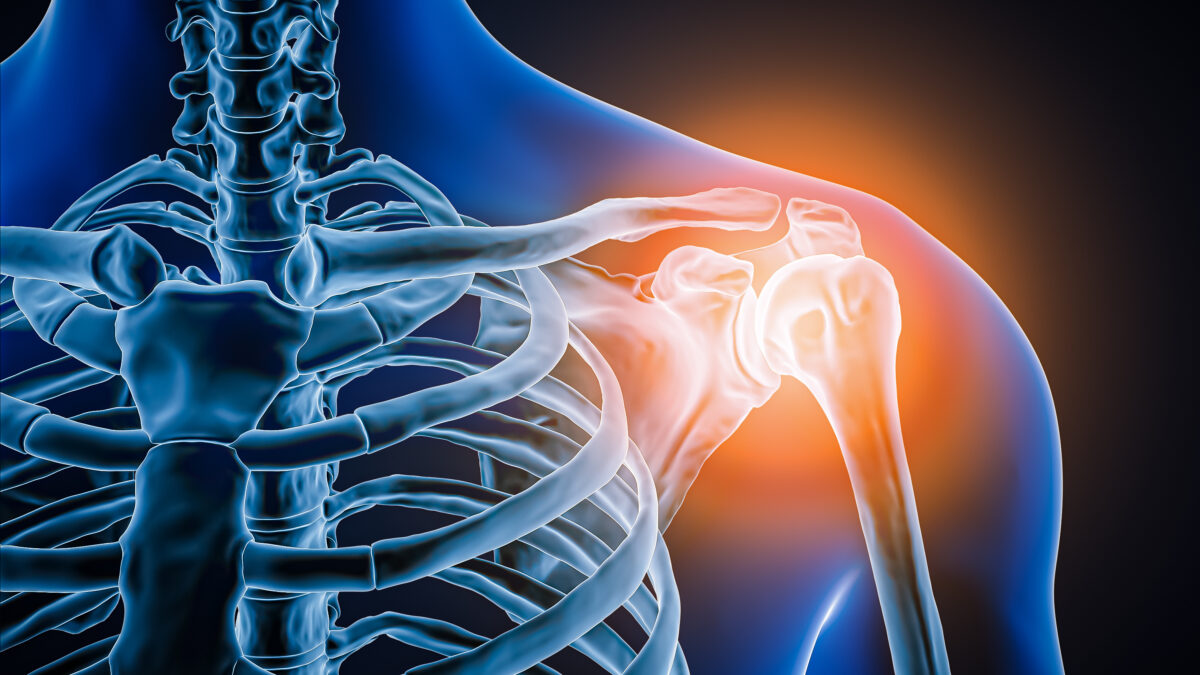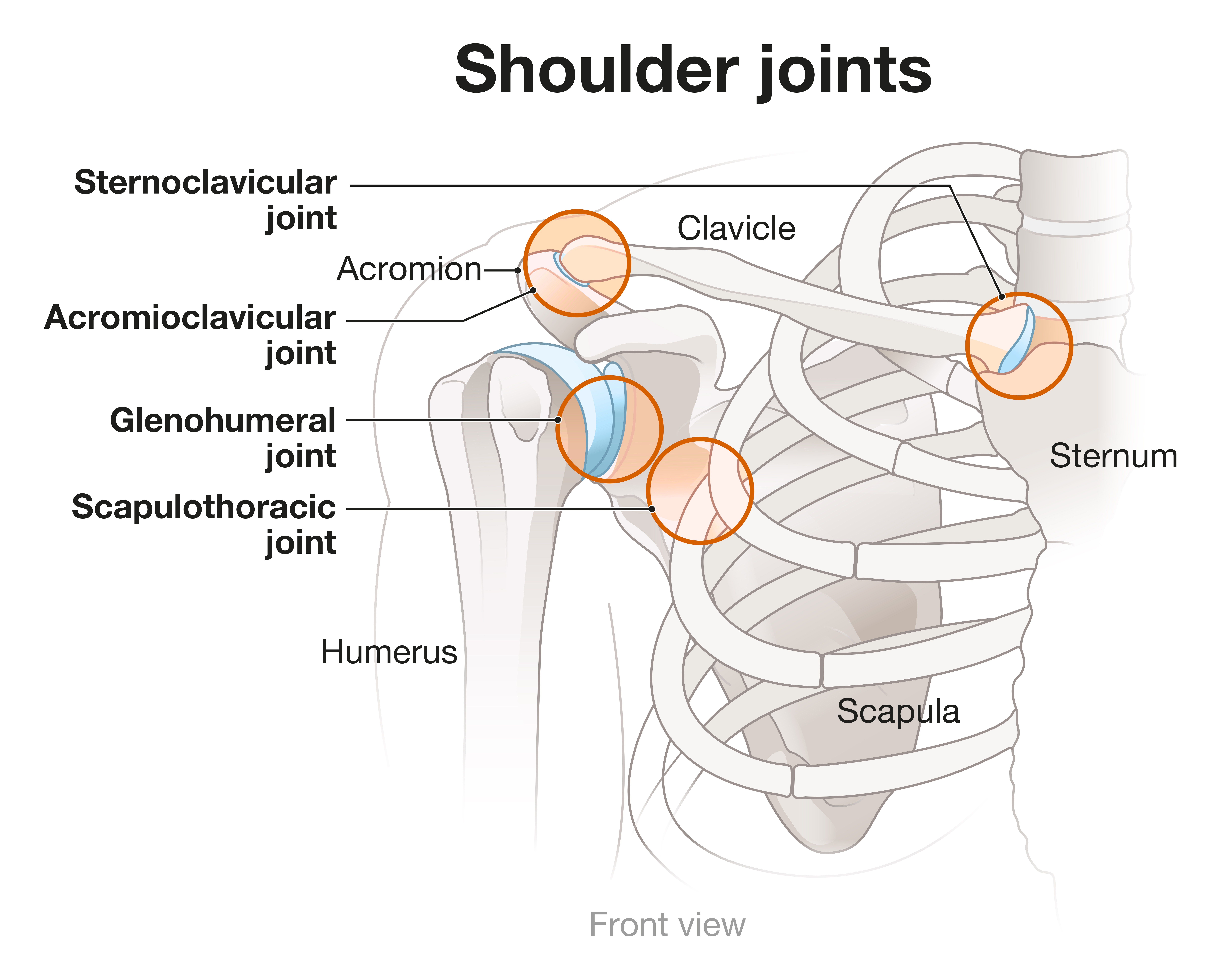Are AC joint injuries impacting your workforce?
by Cole Cook

Anterior or front view of human shoulder joint and bones with inflammation 3D rendering illustration. Pathology, articular pain, anatomy, osteology, rheumatism, medical and healthcare concept.
by Cole Cook
The shoulder is a complex body area, with four joints contributing to it. It can tolerate heavy loads within a large range of motion. The AC joint contributes to both stability and mobility in shoulder mechanics.
Injuries to the AC joint commonly occur from trauma, such as slipping and landing directly on the shoulder, or falling with your arm outstretched. Pain can also be caused by repetitive use, often in workers required to frequently work overhead or even in your workplace rugby stars who have done a lot of tackling.
Pain can also be caused by repetitive use, often in workers required to frequently work overhead or even in your workplace rugby stars who have done a lot of tackling.

Workers with an AC joint injury will generally have the following symptoms:
The AC joint is also a common area for the development of osteoarthritis, and people with a history of AC joint injury or trauma to the shoulder also have an increased risk of developing degenerative change at this joint. This is a problem for our ageing workforce and can lead to complications if not managed correctly.
77% of workplace employees with shoulder, neck or arm issues reported still having complaints after 6 months, indicating the importance of early intervention.
The prognosis for AC joint injuries is generally positive and is best managed conservatively rather than medically. Injuries receiving conservative management typically regain functional movement after six weeks and return to normal activities by 12 weeks. Many things can be done to assist in recovery, including:

A male worker at an abattoir presented to one of our Workplace Health Providers with right shoulder pain. The injury was a result of repetitive pushing and pulling with his right arm – an action required for his role.
The worker rated his pain at 6/10 at its worst, and had changed the way he was using his right arm to perform his role, due to the pain.
Our Provider diagnosed an Acromioclavicular Joint Sprain Grade 1, and estimated that six treatments would be required to enable this worker to heal and return to full duties.
The worker received soft tissue manipulation and dry needling, were advised to apply an ice pack after work, and placed on light duties. After three treatments, they were released and returned to full duties.
The worker’s quick recovery was attributed to a quick diagnosis, and effective treatment delivered early on in the injury. At home care and exercises were prescribed, and followed. Light duties recommendations were actioned by the worker’s team, which was critical.
In this case, if early intervention and treatment was not enacted, the acute injury would likely develop into tears in the tendons, or tendinosis.
AC joint pathology is a commonly overlooked complaint that is often prevalent in traumatic falls or in the ageing workforce. An onsite early intervention management program can assist in early diagnosis and management of this condition, thus avoiding further aggravations or time loss from this injury.
"*" indicates required fields